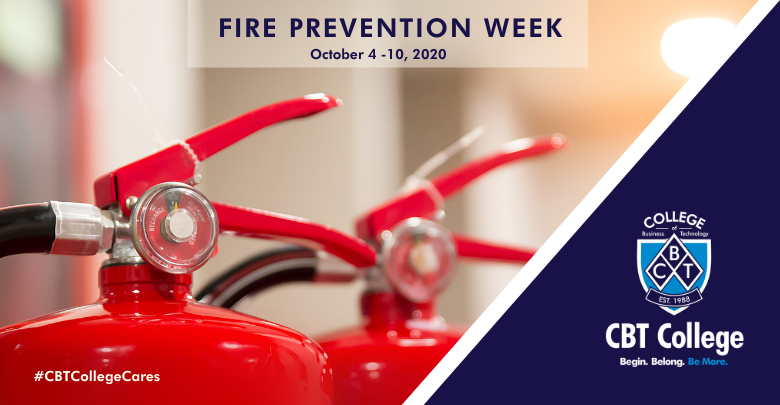
#CBTCollegeCares
Since 1922, the National Fire Protection Association®️ (NFPA®️) has sponsored the public observance of Fire Prevention Week. In 1925, President Calvin Coolidge proclaimed Fire Prevention Week a national observance, making it the longest-running public health observance in our country. During Fire Prevention Week, children, adults, and teachers learn how to stay safe in case of a fire. Firefighters provide lifesaving public education in an effort to drastically decrease casualties caused by fires.
Fire Prevention Week is observed each year during the week of October 9th in commemoration of the Great Chicago Fire, which began on October 8, 1871, and caused devastating damage: killed more than 250 people, left 100,000 homeless, destroyed more than 17,400 structures, and burned more than 2,000 acres of land.
The theme of this year’s Fire Prevention Week campaign is “Serve Up Fire Safety in the Kitchen!” The campaign works to educate everyone about simple but important actions they can take to keep themselves and those around them safe.
According to NFPA, cooking is the leading cause of home fires and home fire injuries in the United States. Almost half (44%) of reported home fires started in the kitchen. Two-thirds (66%) of home cooking fires start with the ignition of food or other cooking materials. Thanksgiving is the leading day for fires involving cooking equipment.
Here are some safety tips to keep you from having a cooking fire:
- Never leave cooking food unattended. Stay in the kitchen while you are frying, grilling or broiling. If you have to leave, even for a short time, turn off the stove.
- If you are simmering, baking, roasting, or boiling food, check it regularly, remain in the home while food is cooking, and use a timer to remind you that you’re cooking.
- You have to be alert when cooking. You won’t be alert if you are sleepy, have taken medicine or drugs, or consumed alcohol that makes you drowsy.
- Always keep an oven mitt and pan lid nearby when you’re cooking. If a small grease fire starts, slide the lid over the pan to smother the flame. Turn off the burner, and leave the pan covered until it is completely cool.
- Have a “kid-free zone” of at least 3 feet around the stove and areas where hot food or drink is prepared or carried.
Stay tuned to learn more about Fire Prevention at home
#CBTCollegeCares